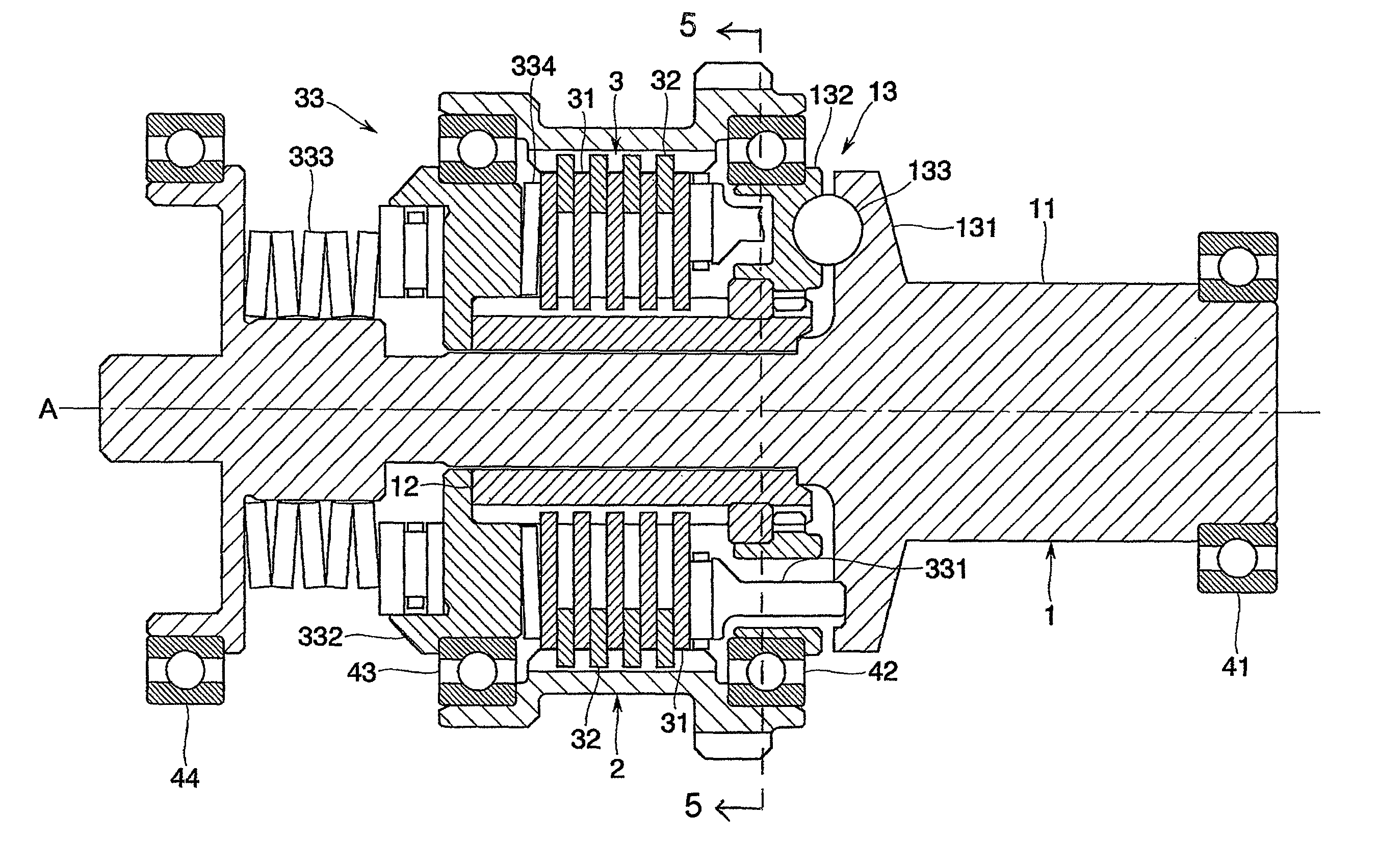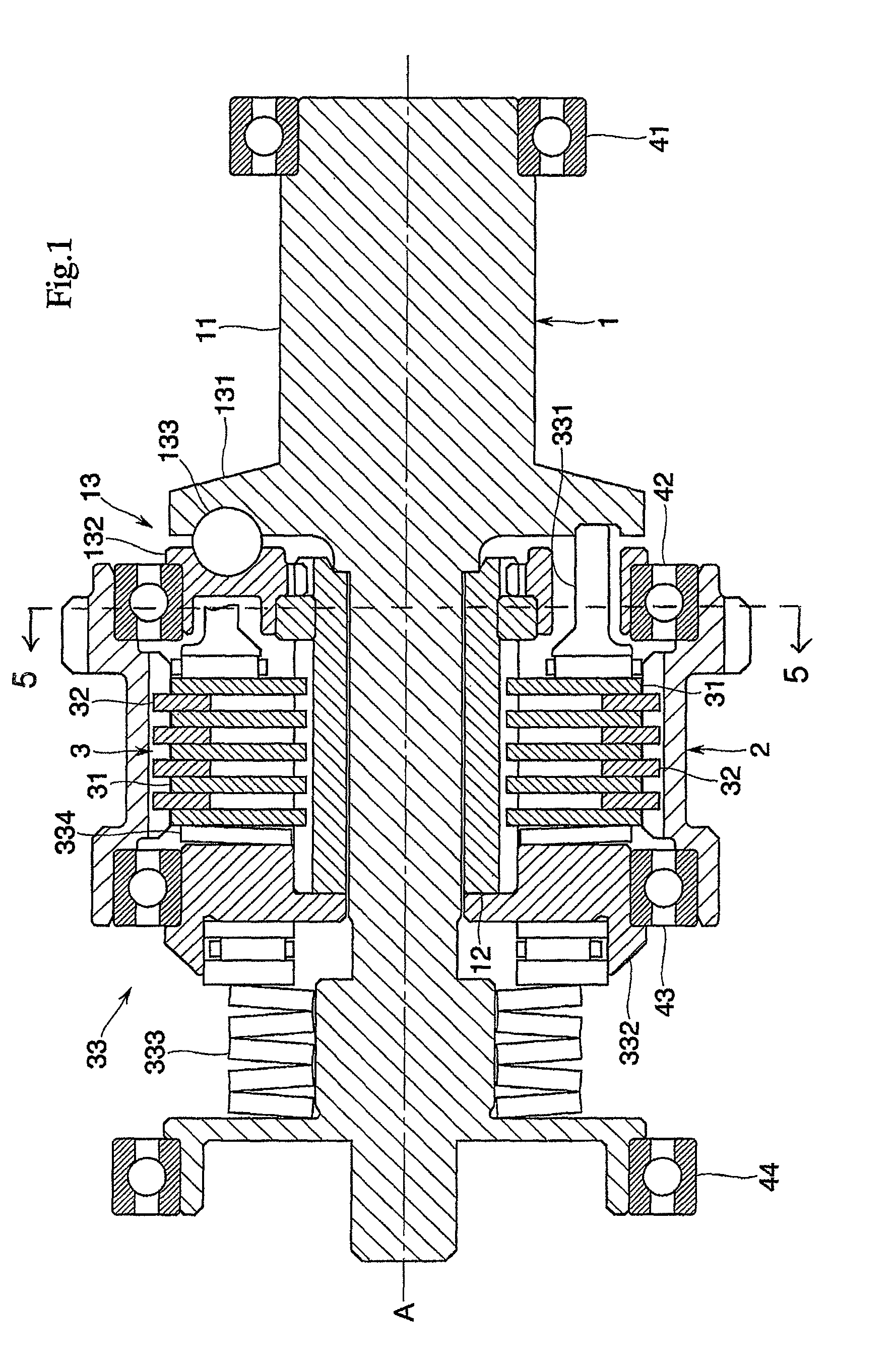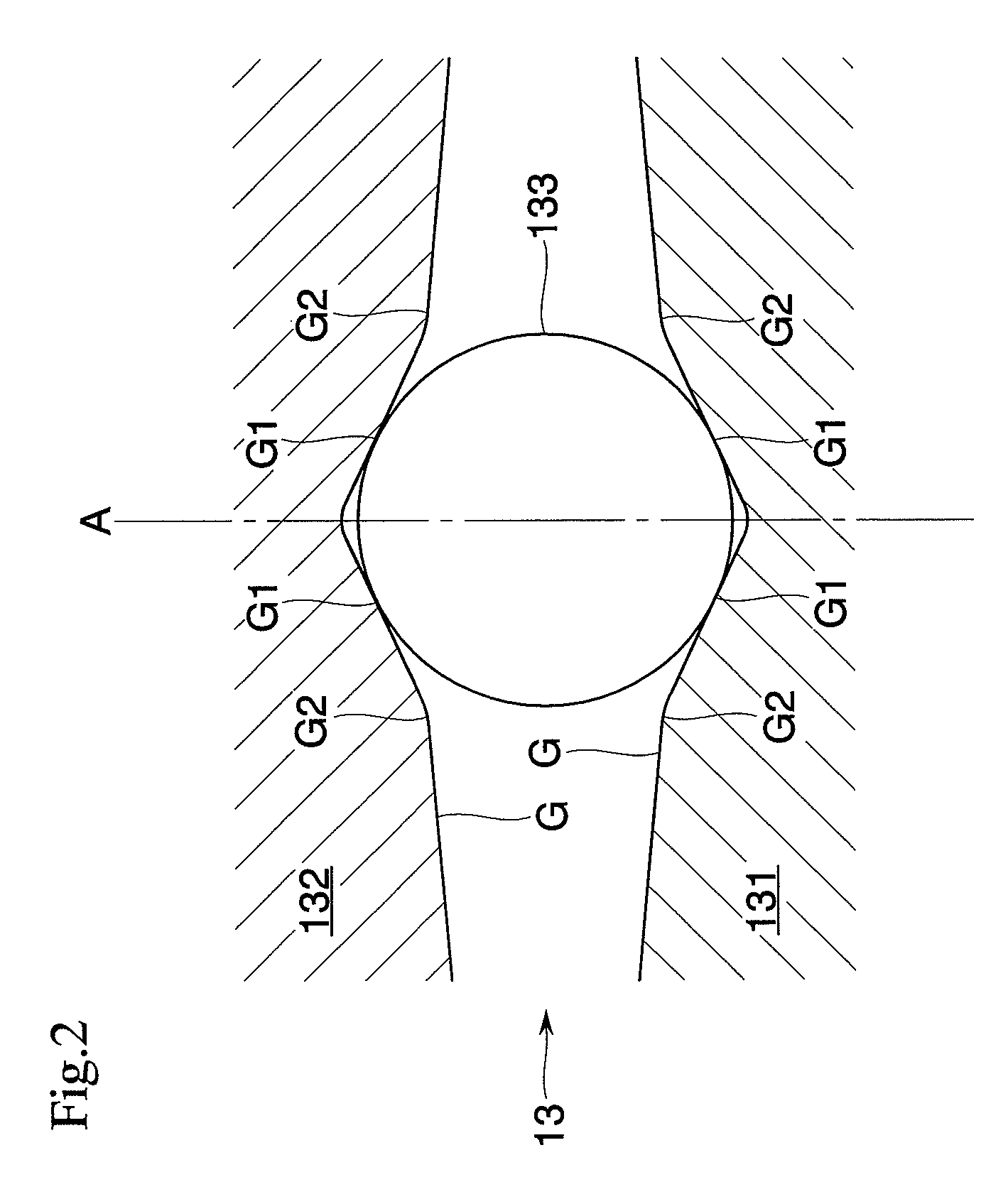Torque limiting mechanism
a technology of torque limitation and torque, applied in the direction of slip couplings, couplings, couplings, etc., can solve the problems of output torque having a magnitude exceeding the prescribed value and falling at a higher frictional torque, and the output torque may be transmitted to the output shaft undesirably, so as to reduce friction between friction plates and reduce frictional torque
- Summary
- Abstract
- Description
- Claims
- Application Information
AI Technical Summary
Benefits of technology
Problems solved by technology
Method used
Image
Examples
Embodiment Construction
[0016]Hereinafter, one embodiment of the present invention will be described with reference to the drawings. As shown in FIG. 1, a torque limiting mechanism according to the present embodiment includes an input shaft (or output shaft) 1 and an output shaft (or input shaft) 2 which are driven to rotate about the same axis A, and a slip clutch section 3 intervening between the input shaft 1 and the output shaft 2 to interconnect the two shafts for transmitting a torque inputted to the input shaft 1 to the output shaft 2.
[0017]The input shaft 1 includes an input shaft body 11, an input-side rotor member 12 driven by the input shaft body 11, and a ball ramp section 13 intervening between the input shaft body 11 and the rotor member 12. The rotor member 12 is displaceable along the axis A independently to the input shaft body 11 and rotatable about the axis A. The ball ramp section 13 includes cam elements 131 and 132 forming a pair along the axis A, and a ball 133 held between recesses ...
PUM
 Login to View More
Login to View More Abstract
Description
Claims
Application Information
 Login to View More
Login to View More - R&D
- Intellectual Property
- Life Sciences
- Materials
- Tech Scout
- Unparalleled Data Quality
- Higher Quality Content
- 60% Fewer Hallucinations
Browse by: Latest US Patents, China's latest patents, Technical Efficacy Thesaurus, Application Domain, Technology Topic, Popular Technical Reports.
© 2025 PatSnap. All rights reserved.Legal|Privacy policy|Modern Slavery Act Transparency Statement|Sitemap|About US| Contact US: help@patsnap.com



